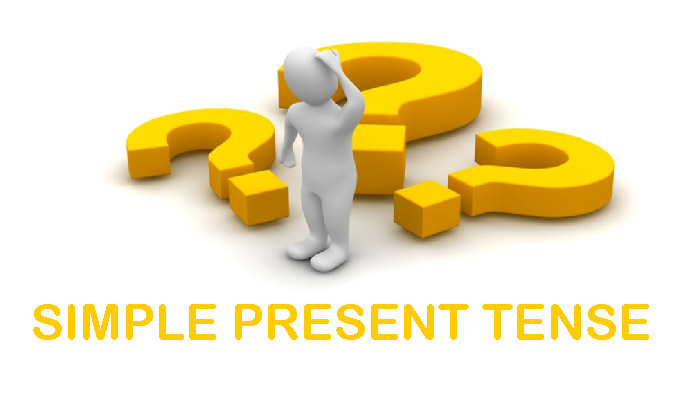Simple Present Tense (Pengertian, Fungsi, Rumus, Dan Contohnya)
Simple present tenses adalah tenses (pola kalimat) yang menyatakan sesuatu insiden atau insiden yang terjadi kini dalam bentuk rujukan sederhana. Tenses jenis ini juga merupakan tenses yang peling sering digunakan. Umumnya penggunaan tenses ini yakni untuk menyatakan suatu perbuatan atau acara yang berlangsung/terjadi pada waktu kini dalam bentuk sederhana, acara atau pekerjaan yang dilakukan berulang-ulang, kebiasaan sehari-hari, insiden atau perbuatan yang tidak ada kaitannya dengan waktu, dan untuk mengekspresikan kebenaran umum.
Fungsi Simple Present Tense
1. Untuk mengambarkan sesuatu yang bersifat kebenaran umum
Contoh :
The sun rises from the east
(Matahari terbit dari timur)
Water boils at 100 degrees Celcius.
(Air mendidih pada suhu 100 derajat celcius)
2. Untuk mengambarkan kebiasaan
Contoh :
I go to office at 7 o'clock
(Saya pergi ke kantor jam 7)
Yuli washes her clothes every Sunday
(Yuli mencuci bajunya setiap hari Minggu)
3. Untuk menciptakan pernyataan umum/berlaku kapan saja
Contoh :
I live in Jakarta
(Saya tinggal di Jakarta)
She is so beautiful
(Dia sangat cantik)
4. Untuk menyatakan perasaan
She loves dancing.
(Dia suka menari)
He likes swimming
(Dia suka berenang)
Simple present tense secara umum dibagi menjadi dua, yaitu:
1. Nominal Simple Present
Verbal simple present yakni simple present yang memakai tobe (am, are, is) dan Complement (pelengkap) yang dapat berupa noun maupun adjective.
2. Verbal Simple Present
Verbal simple present yakni simple present yang tidak memakai tobe (am, are, is), tetapi Verb1 sebagai predikatnya nya.
Rumus Simple Present Tense
Nominal Sentences :
(+) S + To be + C
(-) S + To be + C
(?) To be+ S + C
Contoh:
(+) They are teachers in my school.
(+) I am a student.
(+) She is my new friend.
(+) It is your book.
(-) They aren’t teachers in my school.
(-) I am not a student.
(-) She is not my new friend.
(-) It is not your book.
(?) Are they teachers in my school?
(?) Am I a student?
(?) Is she my new friend?
(?) Is it your book?
Verbal Sentences :
(+) S + V1 s/es + O/C
(-) S + do not/ does not + V1 + O/C
(?) Do/Does + S + V1 + O/C
Contoh:
(+) He takes the bag.
(+) They like mushroom.
(+) People need food.
(+) You smoke cigarette
(-) He doesn’t take the bag.
(-) They don't like mushrooms.
(-) People don't need food.
(-) You don't smoke cigarette
(?) Does he take the bag?
(?) Do they like mushroom?
(?) Do people need food?
(?) Do you smoke cigarette?
Fungsi Simple Present Tense
1. Untuk mengambarkan sesuatu yang bersifat kebenaran umum
Contoh :
The sun rises from the east
(Matahari terbit dari timur)
Water boils at 100 degrees Celcius.
(Air mendidih pada suhu 100 derajat celcius)
2. Untuk mengambarkan kebiasaan
Contoh :
I go to office at 7 o'clock
(Saya pergi ke kantor jam 7)
Yuli washes her clothes every Sunday
(Yuli mencuci bajunya setiap hari Minggu)
3. Untuk menciptakan pernyataan umum/berlaku kapan saja
Contoh :
I live in Jakarta
(Saya tinggal di Jakarta)
She is so beautiful
(Dia sangat cantik)
4. Untuk menyatakan perasaan
She loves dancing.
(Dia suka menari)
He likes swimming
(Dia suka berenang)
Simple present tense secara umum dibagi menjadi dua, yaitu:
1. Nominal Simple Present
Verbal simple present yakni simple present yang memakai tobe (am, are, is) dan Complement (pelengkap) yang dapat berupa noun maupun adjective.
2. Verbal Simple Present
Verbal simple present yakni simple present yang tidak memakai tobe (am, are, is), tetapi Verb1 sebagai predikatnya nya.
Rumus Simple Present Tense
Nominal Sentences :
(+) S + To be + C
(-) S + To be + C
(?) To be+ S + C
Contoh:
(+) They are teachers in my school.
(+) I am a student.
(+) She is my new friend.
(+) It is your book.
(-) They aren’t teachers in my school.
(-) I am not a student.
(-) She is not my new friend.
(-) It is not your book.
(?) Are they teachers in my school?
(?) Am I a student?
(?) Is she my new friend?
(?) Is it your book?
Verbal Sentences :
(+) S + V1 s/es + O/C
(-) S + do not/ does not + V1 + O/C
(?) Do/Does + S + V1 + O/C
Contoh:
(+) He takes the bag.
(+) They like mushroom.
(+) People need food.
(+) You smoke cigarette
(-) He doesn’t take the bag.
(-) They don't like mushrooms.
(-) People don't need food.
(-) You don't smoke cigarette
(?) Does he take the bag?
(?) Do they like mushroom?
(?) Do people need food?
(?) Do you smoke cigarette?
